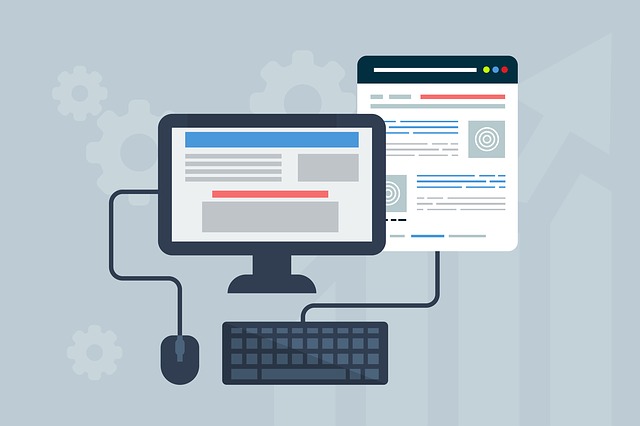How to Quickly Speed Up Your Website Load Time
The speed at which your website loads and renders its pages is very important, yet it’s a factor that many businesses just don’t pay enough attention to. You need to really make sure that your website is fast, for both your visitors and the search engines.
The search engines want to show the best results to their users, so if a site is slow to load they aren’t going to want to display that high in the results. If someone clicks on it and is provided a poor experience they are not going to trust that search engine.
When a user isn’t able to get what he or she wants because it’s loading slowly do you think they are going to visit the site again? Nope. They will find another source of information — one that is fast.
Go easy on the plugins.
Many people love to build websites using WordPress because of the endless number of plugins available. While there are plenty that are very helpful, installing too many of them can really slow down your website.
“There are a lot of plugins that simply install one line of code in a header or footer file, yet the plugin is coded so heavily that the slowdown is 100X what it would be if the code was inserted via regular HTML code,” says Darryl Howard of Blogger Tips. “Try to avoid plugins if they only serve a very simple purpose that can be accomplished without the added resources.”
As a rule, only install plugins that you must have and only if their function cannot be installed any other way. It’s often a good idea to hire a developer to audit your plugins and hard-code some to speed up your site.
Use image compressing.
“If you have a website or blog with a lot of images you should use a compression program,” offers Pat Skinner of AnswerFirst Communications. “This can reduce your lag by as much as 70% just by installing and activating it. One of the most popular options for those running WordPress is SMUSH.IT.”
When you install it you don’t have to do any manual work. Every time you upload an image into your media library it will automatically be compressed. This means your pages load faster and deliver a pleasant user experience, even if your content is packed with images.
Even blogs that just have feature images and a few images throughout can benefit. Any time you can reduce files sizes you are contributing to the improvement of load times, which can benefit a site like this that is image-heavy.
Move away from shared hosting.
Most small businesses sign up for the cheapest website hosting package they can find, as they assume they are all the same. Hosting is hosting, right? Not even close.
“Shared hosting is very cheap,” says Chris Moberg of Slumber Search. In fact, there are many companies that will offer low cost 99 cent per month hosting packages. How can they do this? Because they have hundreds and thousands of websites on their servers.
This causes major lag times and because their resources are always maxed out the load times aren’t only slow, but they often experience down time because their servers crash from being overloaded. At the very least, get a VPS. You can score one for as little as $25 per month. The improvements over shared hosting are dramatic.
Use a CDN if your traffic warrants it.
“For website that have high traffic numbers — thousands of visitors on the site at a time — a CDN (content delivery network) should be used,” suggests Tad Thomas of Thomas Law Offices. “This distributes the website across several servers all over the world, and the server closest to the person visiting the website is the one that delivers it.”
This results in instant access. The difference between a website taking 5 seconds to load and one that loads in under a second is huge.
The user gets their information instantly and doesn’t have to wait. Even five seconds is enough to cause the person to leave or click the ‘back’ button to fund another option. You don’t want to push people away because of a slow site.
Remove extra unused code.
If your website is slow and clunky it could be due to a lot of extra code on the server. This is common if the website is using a pre-made theme. These are made with several options to make it customizable, and these features require much more code than the site actually needs.
“If you are using a theme you can pay a developer to go through the code and remove the functions and options that you are not suing,” says Ignacio Soria of CANN & Co. “I have seen as much as 90% of the code removed on some builds, which speeds up the site.”
Don’t assume the cost is high. There are plenty of capable developers available on freelance marketplaces that can do this for less than $100.
Block spammy IPs.
There are lots of spammers and hackers out there that will send bots and fake traffic to your website in an attempt to hack it. They do this to all websites. “One of the easiest ways to fight spam is to install a security program, like iThemes Security and enable its IP block feature,” says Pedro Del Nero of Vaporizer Vendor. “You don’t have to have technical knowledge, as the setup process handles the majority of the configuration automatically.”
This will put code in your robots.txt file that blocks known spammer IP addresses from accessing your website. If you don’t block these hackers your site will load much slower. So, it’s foolish not to do this.
Create simple landing pages with minimal navigation and CTAs.
This is a tip that solves two issues. First, it will help you convert more of your traffic on these pages into leads and sales. When you send someone to a landing page that has a main call-to-action (CTA) but also has distractions — navigation menu, sidebar offers, etc. — it can overwhelm the visitor and they can leave without converting.
When the navigation menu is removed and there is only one CTA you give the person no other option. Look at this landing page for this licensed pest control company in Brisbane. They are either going to convert or leave. This greatly increases the chance of that conversion happening. Removing all the other options also speeds up your load time.


